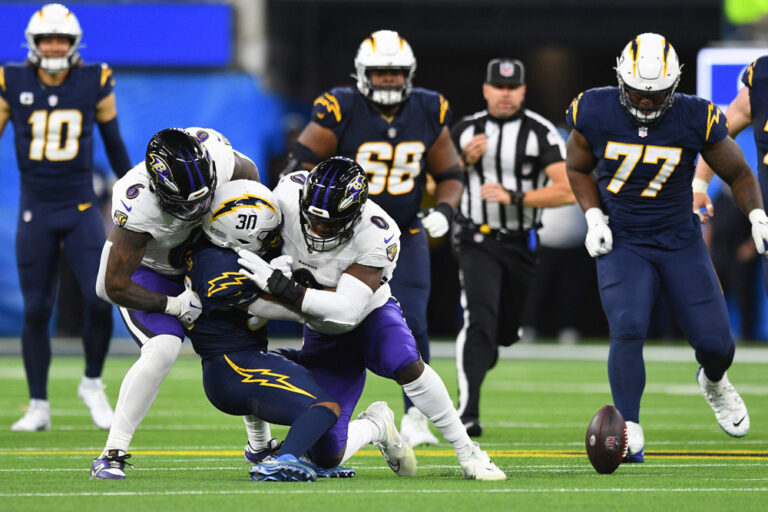Have you ever heard about DVOA Football and wondered, “What is DVOA football?” If you’re a football enthusiast looking to delve deeper into the statistical analysis of the game, understanding DVOA is crucial. DVOA, which stands for Defense-adjusted Value Over Average, is a metric that evaluates a team’s efficiency by comparing their performance to the league average, adjusted for different variables like opponents and game situations. This advanced stat provides a comprehensive insight into a team’s strengths and weaknesses beyond traditional stats. In this blog, we will demystify DVOA football, exploring how it works, why it matters, and how it impacts the game. Gear up to enhance your football knowledge with this deep dive into the world of DVOA.
Introduction to DVOA Football
DVOA (Defense-adjusted Value Over Average) is a fascinating metric used in football analysis to determine a team’s efficiency on both offense and defense, adjusted for the quality of opponents. This advanced statistic helps in providing a more accurate representation of a team’s performance compared to traditional stats like total yards or points scored. What is DVOA football has become a common question among football enthusiasts looking to delve deeper into the intricacies of the game.
Key Components of DVOA
DVOA takes into account various factors to provide a comprehensive analysis of a team’s performance. It considers not just the raw numbers but also factors in situational context such as down, distance, and field position. This holistic approach allows for a more nuanced evaluation of a team’s strengths and weaknesses.
Additionally, DVOA compares every play of a team to the league average based on situation and opponent, providing insights into how a team performs relative to others in similar situations.
Application of DVOA in Football Analysis
Coaches, analysts, and fans utilize DVOA to gain a deeper understanding of team performance beyond surface-level statistics. By analyzing a team’s DVOA on offense and defense separately, stakeholders can identify specific areas of improvement and focus on strategic changes to enhance overall performance.
Furthermore, DVOA helps in predicting future outcomes more accurately by considering the quality of opponents and the context in which plays occur. This predictive element of DVOA makes it a valuable tool for making informed decisions in football strategy and personnel management.

Understanding DVOA Metrics
DVOA (Defense-adjusted Value Over Average) is a key metric used in football analysis to evaluate a team’s performance relative to the league average, while considering game situation adjustments and strength of opponents. This metric helps in providing a more accurate picture of how well a team actually performs, rather than just looking at traditional statistics.
Factors Impacting DVOA Calculation
DVOA takes into account various aspects such as down, distance, score, and field location to determine the value a player or team contributes compared to the league average.
Importance of DVOA in Football Analysis
DVOA football provides insights beyond basic stats, allowing for a more nuanced understanding of a team’s strengths and weaknesses. Teams with a higher DVOA are considered more efficient and effective in different game situations.

How DVOA Affects Football Strategy
DVOA (Defense-adjusted Value Over Average) is a key metric used in football analytics to evaluate a team’s performance on both offense and defense, accounting for the strength of opponents faced. In essence, DVOA provides a more nuanced understanding of a team’s efficiency compared to traditional stats like total yardage or points scored. Teams with a high DVOA are considered more effective in various aspects of the game. Understanding DVOA can significantly impact a team’s strategic decisions on the field.
Impact on Playcalling
Coaches and coordinators rely on DVOA to make informed playcalling decisions during games. By analyzing the opponent’s DVOA metrics, teams can exploit weaknesses and adjust their strategies to capitalize on favorable matchups. This strategic advantage can be the difference between winning and losing crucial games.
Utilizing DVOA data allows teams to identify areas for improvement and tailor their game plans accordingly, leading to better overall performance on the field.
Player Evaluation and Team Building
Front offices and scouting departments utilize DVOA to evaluate player performance beyond traditional stats. By analyzing individual player DVOA ratings, teams can pinpoint valuable contributors who may not stand out in basic stat sheets. This data-driven approach also guides teams in building a balanced roster that maximizes efficiency on the field.
Investing in players with positive DVOA ratings can enhance a team’s overall competitiveness and strategic edge over opponents.
Advantages of Using DVOA in Football Analysis
When it comes to analyzing football performance, DVOA (Defense-adjusted Value Over Average) has become a invaluable tool for football analysts and enthusiasts alike. DVOA provides a comprehensive, data-driven approach to assess a team’s efficiency on both offense and defense, taking into account various factors such as game situation and quality of opponents.
Enhanced Performance Evaluation
Using DVOA allows for a more accurate evaluation of a team’s performance compared to traditional statistics. It provides a deeper insight into how well a team performs relative to the league average, considering the context of each play.
Moreover, DVOA adjusts for factors such as score margin and red zone performance, providing a more nuanced understanding of a team’s strengths and weaknesses.
Data-Driven Decision Making
By leveraging DVOA in football analysis, teams and coaches can make strategic decisions based on empirical data rather than subjective observations. DVOA helps in identifying areas of improvement, optimizing game plans, and making informed roster decisions.
- Strategic Planning: Teams can use DVOA to determine optimal game strategies tailored to their strengths and exploit opponents’ weaknesses.
- Roster Management: DVOA aids in evaluating player performance objectively, leading to more effective roster selections and lineup adjustments.
Impact of DVOA on Team Performance
When it comes to understanding the performance of football teams, DVOA (Defense-adjusted Value Over Average) plays a significant role. DVOA is a metric that quantifies a team’s efficiency on both sides of the ball, considering the quality of opponents faced. By analyzing a team’s DVOA, analysts and fans can gain valuable insights into how well a team performs relative to the league average.
Key Factors Affecting DVOA
DVOA takes into account various factors such as offensive and defensive performance, special teams play, and situational football. It provides a comprehensive view of a team’s overall effectiveness, beyond just traditional stats like total yards or points scored. Moreover, DVOA accounts for game situations, adjusting for factors like blowouts or garbage time.
Understanding what DVOA football involves delving into these nuanced aspects that can impact a team’s performance throughout the season.
Importance of DVOA Analysis
Teams that demonstrate strong DVOA ratings are often more likely to sustain success over the long run, as DVOA tends to be a better predictor of future performance than raw statistics alone. By utilizing DVOA analysis, coaches, analysts, and fans can identify strengths and weaknesses, make strategic adjustments, and gauge a team’s true capabilities.
By incorporating DVOA insights into their decision-making processes, teams can optimize their game plans, personnel usage, and overall performance on the field.
Frequently Asked Questions
-
- What does DVOA stand for in football?
- DVOA stands for Defense-adjusted Value Over Average, which is a metric used to evaluate a team’s overall performance, accounting for factors such as opponent strength and game situation.
-
- How is DVOA calculated in football?
- DVOA is calculated by comparing a team’s performance on a play-by-play basis to the league average, adjusted for factors like opponent strength, field location, and game situation.
-
- Why is DVOA important in football analytics?
- DVOA is important in football analytics as it provides a more accurate measure of a team’s performance compared to traditional statistics, taking into account the context in which plays occur.
-
- What is the relationship between DVOA and a team’s success in football?
- DVOA is often correlated with a team’s success in football, as teams with higher DVOA ratings tend to perform better on the field and have a higher chance of winning games.
-
- How can DVOA be used to evaluate player performance in football?
- DVOA can be used to evaluate individual player performance by looking at how they contribute to their team’s overall DVOA rating, highlighting the impact each player has on the team’s success.
Unlocking the Secrets of DVOA Football: Key Takeaways
In conclusion, DVOA football stands for Defense-adjusted Value Over Average, a powerful metric that offers a deeper insight into a team’s performance beyond traditional stats. By considering various factors like opponent strength and situation, DVOA provides a more accurate assessment of a team’s effectiveness on both offense and defense. Understanding DVOA can help fans and analysts alike in evaluating teams objectively and predicting game outcomes more reliably.
Remember, DVOA is a valuable tool that complements other statistics in analyzing football performance comprehensively. So, next time you hear about DVOA, you’ll know it’s not just another acronym—it’s a game-changer in the world of football analytics.





